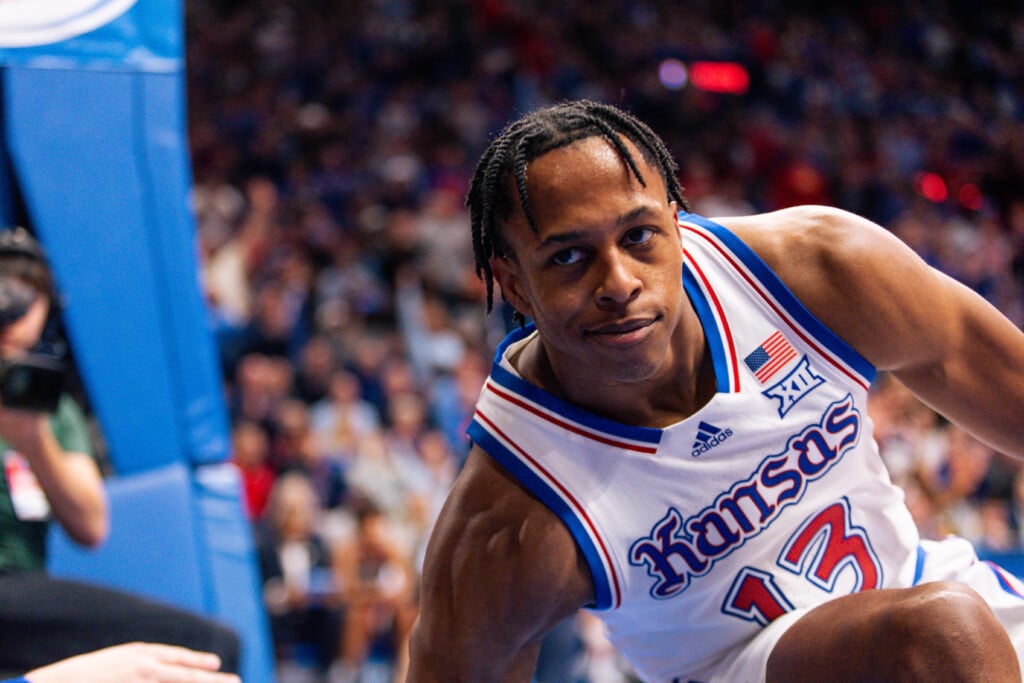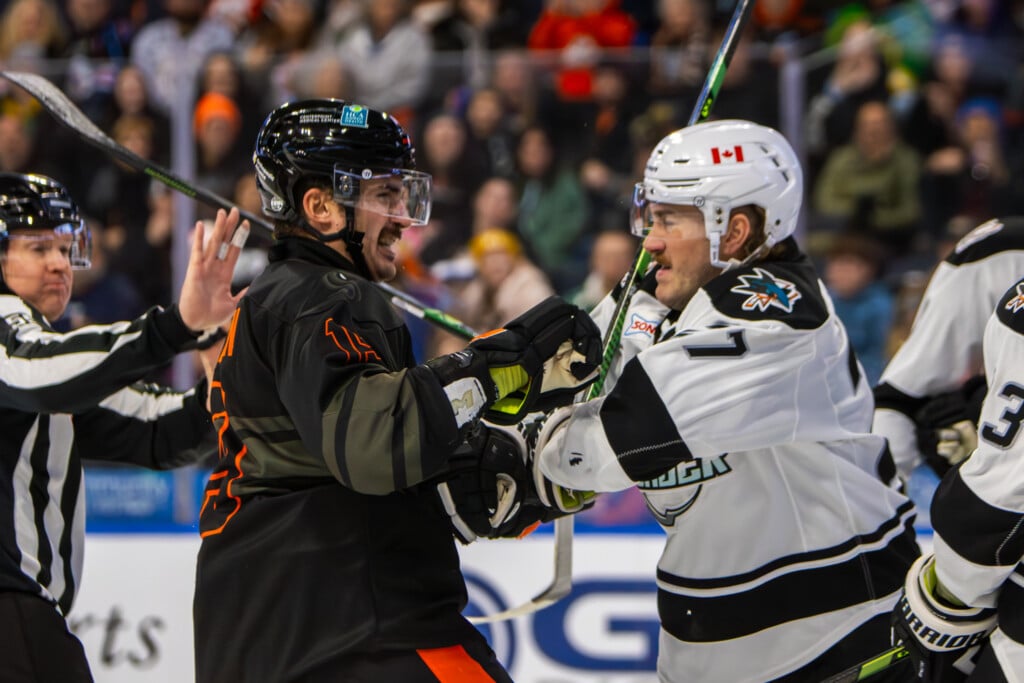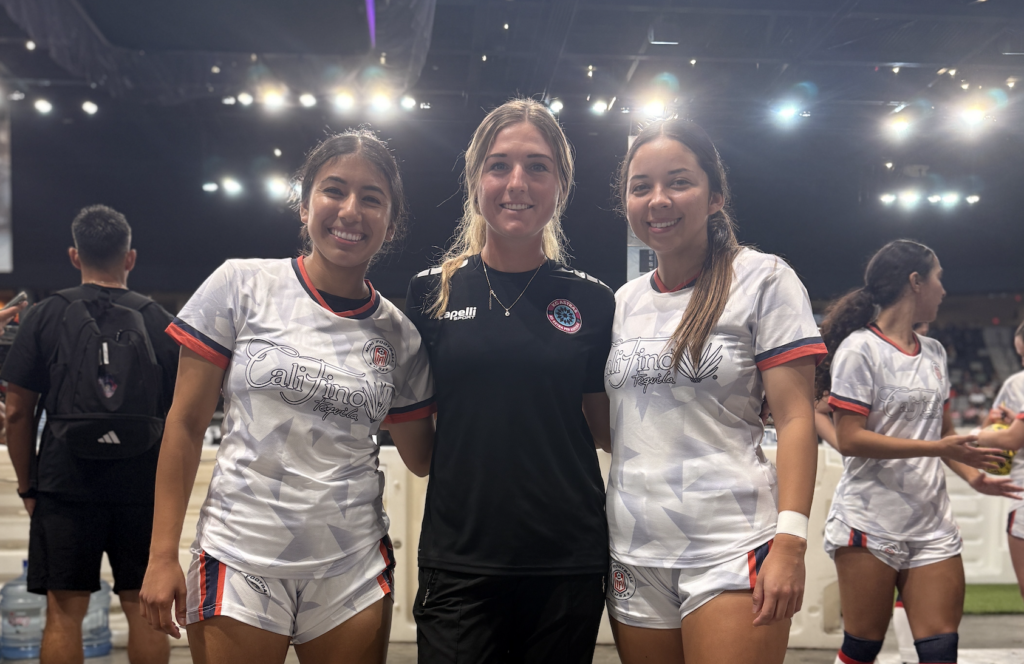View from Third Base: Today marks the 64th anniversary of Willie Mays’ 1960 All-Star Game
It’s a hot July day at Municipal Stadium in Kansas City for the one o’clock start of the 1960 All-Star Game. As the Missouri sun blazes from above, the National League’s lead-off batter wants to light things up down on the field. Willie Mays smashes Bill Monbouquette’s first pitch down the right field line and bursts out of the box into a race around the bases.
Mays races against New York Yankee Roger Maris, the American League’s right fielder. Traded from Kansas City six months ago, Maris knows the walls of his former workspace and ably chases the ball into Municipal Stadium’s right corner. But between the outfield and infield, the game has seemingly begun on two different speeds—Mays has already rounded second base, ballcap flying off, and he charges down the basepath safely into third.
The sensational triple stuns and delights the 30,600 fans in attendance who had barely sat down after the National Anthem with their cold drinks before Mays, a San Francisco Giant, brings them right back to their feet. Despite their American League roots and loyalty to the Kansas City Athletics, the spectators roar with instant appreciation for this interloper from another league.
Mays has the crowd but also the catbird’s seat. With his left foot on the bag and right foot angling toward home, he commands a top-notch view of the opposing team. He can observe and consider any American League star on the diamond and in their dugout.
Mays first takes note of the man on the mound, Red Sox ace Bill “Monbo” Monbouquette, no doubt smarting from what Mays just did to his first ever All-Star pitch. The young righty must now monitor one of history’s most dangerous baserunners while pitching to the Pirates’ left-handed Bob Skinner.
Monbo waits for the ball to be returned to him. He stares back at Mays. Mays gets to third more often than any player alive, whether with triples or stolen bases, and is never content with even that progress. Mays has stolen home five times in his career already, including just the other week, on June 24th against the Reds.
Mays can also see Yogi Berra, catching his 14th All-Star game. Other than their All-Star games, the last time Mays shared a competitive field with Berra was the 1951 World Series between their teams, when the Giants still called New York’s Polo Grounds home. Since then, the Brooklyn Dodgers’ Jackie Robinson stole home under Berra’s tag in the first game of the 1955 World Series. A running tape of Robinson’s iconic steal must be seared into Berra’s mind (as it is in all of baseball’s) and perhaps stored alongside some of Mays’ basepath derring-do, including the recent steal against the Reds.
Will their preoccupation over theft-deterrence affect Berra’s or Monbo’s focus as Skinner comes to the plate? Odds-on. After all, Berra, the diamond’s great malapropping sage himself, has ordained that “baseball is 90 percent mental; the other half is physical.”
From his perch on third base, Mays can also peer between the third baseman and shortstop (Eddie Matthews and Ron Hansen) toward a White Sox left fielder who confounds teams with triples as often as Mays does. His parents back in Cuba named him Saturnino Arestes Armas Arrieta Miñosa, and their speedy son can get to third by the time they finish reciting his name. He is also known as Minnie, the Cuban Comet.
Minnie Miñosa is the American League’s first Afro-Latino player, and it was only a little over a decade ago when Miñosa and Mays starred in consecutive Negro League World Series. As baseball’s color barrier—a gentlemen’s agreement, they called it—continued to keep black and Latino players locked out of the National League and American League, Miñosa and his New York Cubans won the 1947 Negro League World Series, and then Mays and his Birmingham Black Barons won in 1948.
Those last few Negro League World Series, several of which played out on this Kansas City field, are bittersweet capstones to decades of segregation. Mays, Miñosa, Hank Aaron, Ernie Banks, and Elston Howard are all All-Stars in Mays’ current field of view who played in the Negro Leagues or Latin American Leagues.
Thirteen years have passed since Jackie Robinson broke through the color barrier, and some say integration has made it. Others argue that it is still rounding bases. By this day, July 11, 1960—just a couple months after President Eisenhower signed the Civil Rights Act of 1960 and the same day that Harper Lee published To Kill A Mockingbird, her novel about race inequality in America—every team now has hired at least one black ballplayer. But several teams have slowed to a stop there with the hiring, and the Red Sox held off until just last year when they finally brought on Pumpsie Green. As Willie Mays stands on third base in his eighth All-Star game, the integration of baseball dust off its pants on second.
From third base and in this bright Kansas City sunshine, Mays can also admire what Miñosa roams, one of the nation’s most beautiful baseball fields. Prior to the 1948 Negro League World Series, Mays spent a week of playoff baseball here at Municipal (then called Blues Stadium) with his Black Barons beating the Kansas City Monarchs to earn a World Series spot against the Homestead Grays. The grandstand stood one deck tall when he played here, and the uneven, pockmarked field resembled a cow pasture.
A second deck was added in 1955, and on this day, the sweep of the basepaths and a striking checkerboard pattern of the outfield grass has transformed Municipal Stadium into a rural sanctuary where space in the city expands, time slows and worries dissolve. The field’s immaculate and reposeful playing surfaces are the work of the young groundskeeper George Toma and his team of inner-city kids hired by the Athletics three years before.
From third base, Mays can see who is between Miñosa and Maris, the centerfielder and his old friend and rival Mickey Mantle.
Whether Mays will admit it, Mantle’s power as a batter at least matches his own. For years he has smoked American League pitching and competes every year for the American League’s Most Valuable Player award, just as Mays does in the National League. Not only is Mantle one of only two Triple Crown winners in the stadium (Ted Williams being the other) but Mays’ wallet is $1000 dollars lighter after losing a friendly side bet in February to Mantle over who would hit more home runs in the pre-season 1960 Home Run Derby.
Mantle and Mays both had fathers who played semi-professional baseball. Mutt Mantle and Cat Mays raised their sons to become the next Joe DiMaggio. During his rookie year of 1951, Mantle had a batting slump and was demoted to the Yankees’ farm team, the Kansas City Blues, which played here before the Athletics leased the stadium. When his slump continued, he called his father, either out of frustration or for support.
In his autobiography The Mick, Mantle says that he told his father words to the effect, “I don’t think I can play baseball anymore.” Mutt drove up from Oklahoma that day, started packing his son’s clothes, and, according to Mantle, said to his son, “I thought I raised a man. I see I may have raised a coward instead.” If using the word “coward” wasn’t bad enough, Mutt then added, “You can come back to Oklahoma and work the mines with me.” Mantle’s slump ended that week, he returned to the Yankees, and started the 1951 World Series in the outfield next to DiMaggio and against Mays and the Giants.
Mantle’s existence reminds Mays that they are both mere mortals, not just when Mantle outduels him or after they both lost their parents, but also because they have both emerged from a 1959 season rough with injuries, marriage difficulties and struggles with fame.
Monbo has the ball and Berra returns to behind the plate. Skinner is about to step into the box. Past them and above in the grandstand, Mays has noticed that new and tangled colonies of desks, wires, and telegram equipment have sprouted to accommodate the over 100 members of the press covering the game.
From the television booth, Curt Gowdy and Russ Hodges are calling the game for NBC. Hodges famously called the 1951 pennant game along with the Bobby Thomson walk-off homerun that propelled Mays and his New York Giants to that first World Series between Mays and Berra. In the booth next to Hodges and Gowdy, Merle Harmon does the radio broadcast, reaching millions of additional people, including a young and ardent baseball fan in Holden, Missouri by the name of Gary “Dusty” Rhoades.
At 15 and already one of Holden’s best ballplayers in high school and American Legion ball, Dusty’s peers have bestowed him with his potent nickname after Mays’ New York Giants teammate Jim “Dusty” Rhodes helped Mays win the 1954 World Series with several clutch RBIs. Young Dusty has not missed many regular season games of the Athletics, attending a couple in person here at Municipal Stadium and listening to the rest on radio.
What Mays or even the young Dusty cannot see or know is that sixty-four years later, in 2024, and while in hospice care at the age of 79, Dusty will listen to this game again—an archived recording—but this time with me, his son.
Looking up and above the right field bleachers, thirty feet above the field, Mays can see the tops of cars and trucks—the traffic on Brooklyn Avenue. They often honk, knowing that by doing so, players like Mays, along with the spectators, will all hear them. Some of those north-bound drivers are heading to Arthur Bryant’s Barbecue, just four blocks down on 18th Street. And others will turn east on 18th Street and head toward Highland Avenue or Vine Street for a cool beer or cocktail.
Skinner steps into the box and Mays steps off third. Then, as Monbo and Berra and everyone in Municipal Stadium well note, Mays continues to edge further and further down his basepath.
He’s also edging into the future. What even Mays cannot see from third is that future. He cannot see the next couple of minutes, though by virtue of him being Willie Mays, he virtually wills a preoccupied Monbouquette-Berra battery to give up a Skinner single, driving Mays across home plate. After Matthews and Aaron bat, Ernie Banks (a former Kansas City Monarch) will launch a Monbo pitch over the left-field wall, driving in Skinner and putting the National League ahead for good.
Mays also cannot yet know that in this game, he will get two more hits in his next at-bats, the first of which will be a single and the second of which should have been. But in the fourth inning, he hits a Jim Coates pitch so hard through the infield that it goes through second baseman Pete Runnels’ legs and to Mantle in center field. Mays rounds first base, and everyone expects him to stop, but he makes a daring dash for second, and with an entire stadium going wild again, yelling for him to “Go, go, go!” he slides in ahead of the hurried throw from a surprised Mantle. As Mays brushes off the Kansas City dust and as the young Dusty Rhoades, amazed, listens from Holden, the crowd continues to roar. Later in his broadcast, Harmon can’t help but compare Mays to the day’s other blaze, gushing that “he is as hot as this Kansas City weather!”
Sixty-four years later, Mays’ double and its accompanying sounds will have both my father and I leaning in toward an iPhone playing a partial recording of the game we found on YouTube. Dad will clench his fist as Mays rounds first base and laugh at Harmon’s “hot as this Kansas City weather” remark. Though we already know the history, we will still feel the suspense of whether Mays will beat Mantle’s throw to second again and again throughout time.
On June 4, 2024, two weeks after we listened to the All-Star game’s recording, my father passed away in his Leeton, Missouri home. Just a couple weeks later, Mays himself passed away in Northern California at the age of 93.
My wife and I live in Kansas City, and the day after Mays died, we went out to the site where Municipal Stadium once sprawled. Back in 1923, when it was first built, the field was excavated down to thirty feet below street level, and that vast space had to be filled back in after the stadium was demolished in 1976. A housing development called Monarch Manor has been built over that ground, and third base is probably thirty feet below a Monarch resident’s BBQ grill.
On a small patch of ground nearby, at the corner of Brooklyn and 22nd, where the box office once stood, stands a marker of stone and metal with a brief epitaph for what is buried beyond. While the marker and plaques for players like Jackie Robinson, another former Monarch, are superb, this record seems a pittance considering what transpired here over five decades. The great sportswriter Roger Angell once wrote that such sites show “that we may not possess the scorecards and record books to help us remember who we are and what we have seen and loved.”
As Mays extends his lead off third base, as he stares down Monbo and Berra, alive again in the Kansas City sunshine, and as my father along with a million other fans lean toward the radio, television and field in 1960 to see what will happen next, we all lean in and try to hold on to what and who is left.





